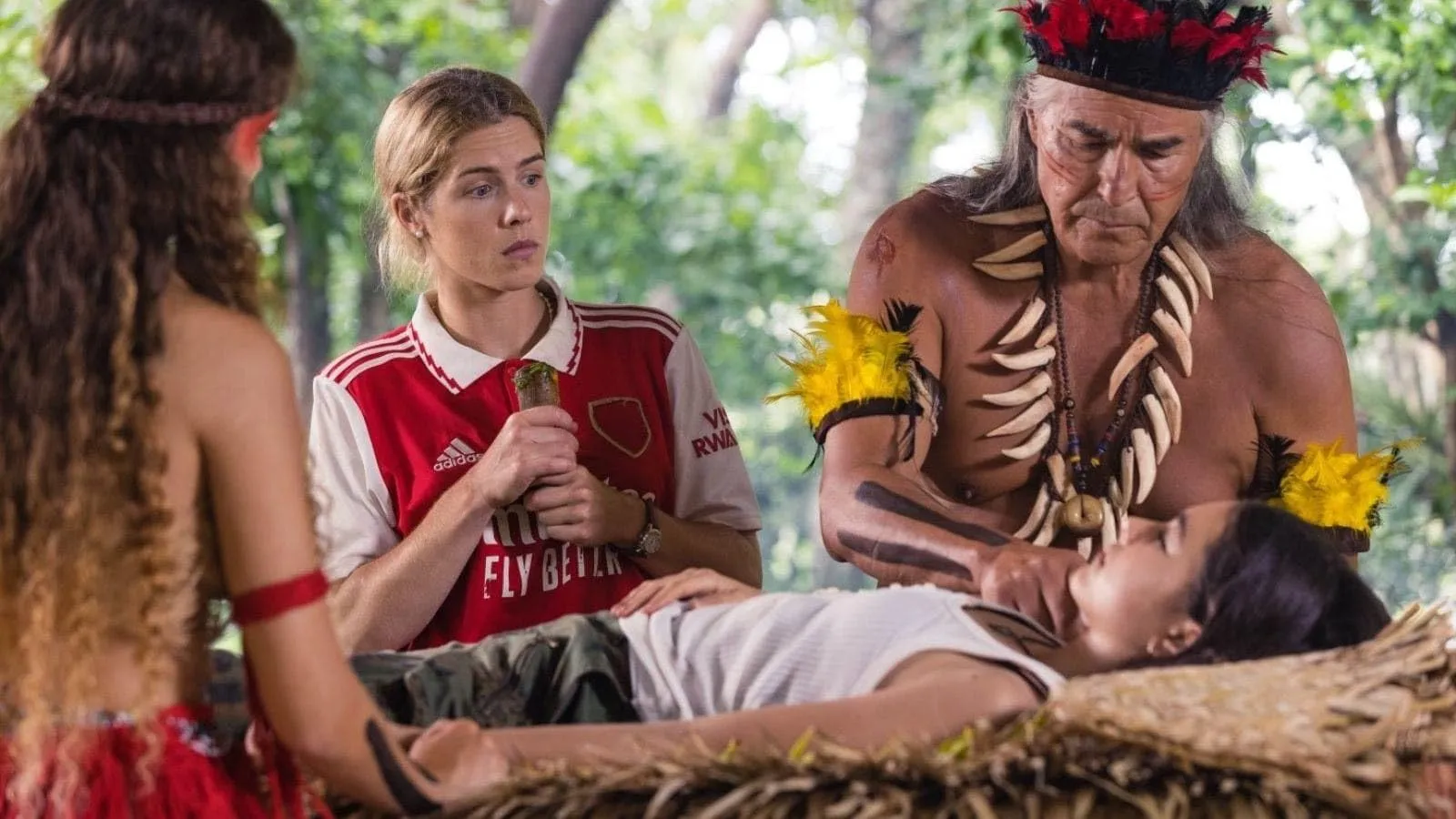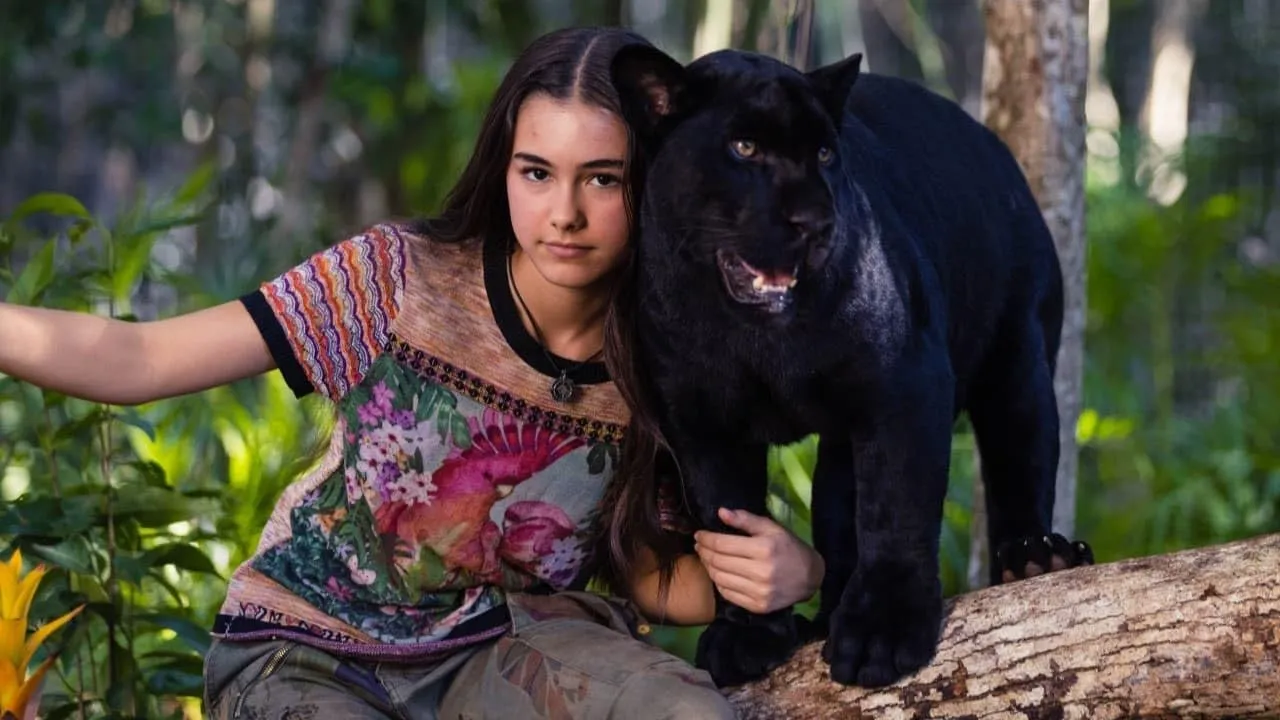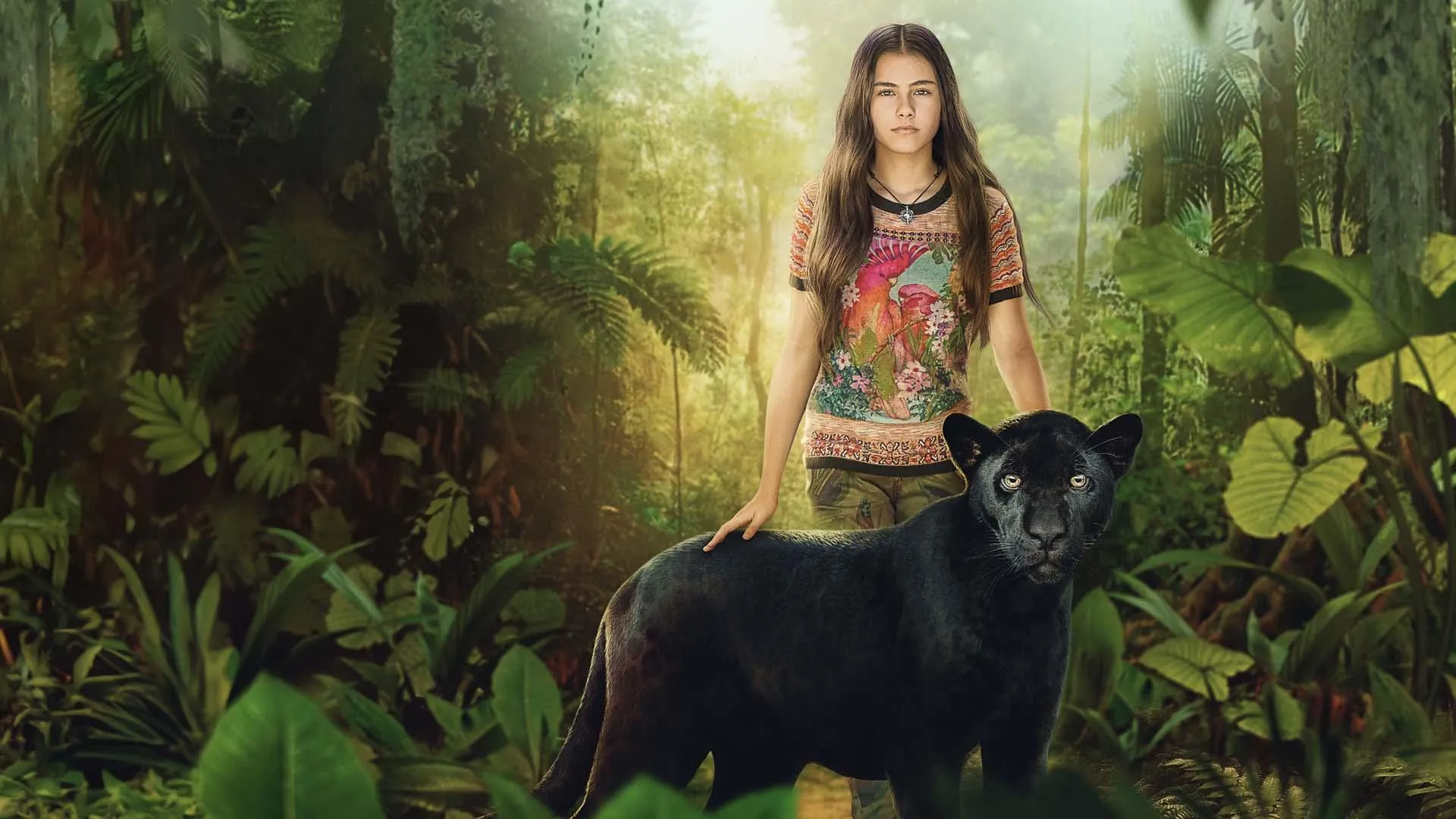“Autumn and the Black Jaguar” presents a tale where a determined young girl leaves the familiarity of city life to return to the lush wilds of the Amazon. The film fits into the family adventure genre, appealing to viewers who enjoy stories of nature conservation intertwined with a coming-of-age narrative.
The central plot follows Autumn, a spirited teenager who embarks on a mission to rescue a beloved jaguar she bonded with during her childhood in the rainforest.
The film is the work of a director and writer known for their commitment to family-oriented, nature-themed storytelling. Their previous projects have consistently highlighted environmental concerns and the importance of protecting wildlife.
In this film, the production creatively contrasts the bustling urban environment of New York City with the untamed, mysterious atmosphere of an Amazonian setting. This juxtaposition is evident in the carefully chosen locations that serve as backdrops for both modern life and the timeless allure of nature.
The narrative is driven by Autumn’s relationships: her caring yet cautious father, a biology teacher whose efforts to guide her often fall short, and members of an indigenous community whose presence underlines the cultural richness of the rainforest. The film signals its emphasis on wildlife protection and environmental responsibility through these intertwined characters and settings.
The Plot’s Rhythms: Memory, Mission, and Multicultural Echoes
“Autumn and the Black Jaguar” follows a narrative that shifts between the bustling streets of New York City and the enigmatic expanse of the Amazon. The story begins with Autumn’s formative years spent amidst the dense greenery of the rainforest, where she forms a rare connection with a young jaguar.
Later, her life in a modern metropolis serves as a backdrop until a pressing call from her past draws her back to the wild. An unexpected letter sparks the decision to return, setting off a chain of events that intertwine her history with present-day urgency.
The film makes extensive use of flashbacks, a device that reveals fragments of Autumn’s early life and deepens the audience’s understanding of her emotional ties to the natural world.
These reflective segments provide context about her personal loss and the moment she first encountered the jaguar, establishing a symbolic link between her identity and the animal.
In its narrative structure, the film employs a non-linear style. Fast-paced sequences, such as the chase through the jungle and tense encounters with those who threaten the environment, are intercut with quieter, personal moments that show family interactions and internal conflicts.
This mix of high-energy scenes and slower, introspective pauses adds layers to the viewing experience. However, some transitions between past and present may seem sudden, challenging the viewer to keep pace with the evolving storyline.
Supporting roles are given to characters like the anxious biology teacher and members of the local indigenous community. Their arcs introduce ethical concerns about wildlife preservation and highlight internal family disputes. The way these secondary stories are interwoven enriches the central narrative, echoing techniques seen in certain Indian cinema traditions that favor layered storytelling and nuanced character studies.
Portraits in Motion: Characterization and Performances
Autumn transforms from a sensitive teenager with inner turmoil to a determined advocate who reclaims her heritage and connection to nature. Her actions stem from a deep desire to honor her past and preserve what she once cherished.
This evolution is marked by moments that reveal the quiet strength behind her youthful resolve. The narrative paints her as someone motivated by memories of a life intertwined with the wild, compelling her to confront challenges that test her resolve.
The dynamic between Autumn and her father is rendered with careful attention. Their exchanges capture the tension between a protective parent and a child seeking freedom.
His caution, born out of genuine concern, contrasts sharply with her rebellious impulses, creating scenes rich in emotional interplay. This dynamic is reminiscent of family portrayals in several Indian films, where generational differences add texture to personal journeys.
The biology teacher plays a contrasting role in the narrative. Presented as a figure whose own anxieties color her efforts to control the situation, her interventions add moments of humor that provide relief from the film’s more serious themes. However, her actions sometimes distract from the central narrative, prompting a mixed reaction from the audience.
Local community leaders and indigenous figures receive their share of focus as well. Their portrayals, though not deeply explored, signal an effort to ground the film in a reality that honors native traditions and environmental wisdom. The interactions among these characters highlight the importance of cultural identity in a story that spans continents.
Noteworthy is the chemistry between the actor portraying Autumn and the jaguar. Their silent exchanges and shared screen time speak to a deep, wordless understanding that mirrors classic cinematic portrayals found in both Bollywood narratives and global cinema. Such moments infuse the film with emotional weight, even as other character motivations occasionally fall short of expectations.
Nature’s Call: Ethical Tales and Cultural Mirrors
“Autumn and the Black Jaguar” centers its narrative on the preservation of wildlife and the urgent risks posed by poaching and deforestation. The film places considerable weight on the idea that the natural world is not an endless resource, urging its younger viewers to act responsibly toward nature.
The storyline brings environmental threats into sharp focus, showing the rapid loss of habitat and the decline of species, which reflects concerns shared across international film traditions, including several strands within Indian parallel cinema.
The relationship between Autumn and the jaguar forms one of the film’s most visually striking and symbolically rich elements. Their connection is portrayed not as a mere domestication of a wild creature but as an exchange of mutual trust. This presentation raises significant ethical questions about how society views and interacts with nature. The movie invites viewers to consider if affection for a wild animal can coexist with respect for its innate freedom and wildness.
Cultural representation is handled through characters drawn from the indigenous communities of the Amazon. Their presence adds a layer of cultural depth, as the film uses local traditions, costuming, and language to root the story in its setting.
Although some portrayals may come across as simplified, they serve as an important counterpoint to the more familiar urban backdrop of New York City, highlighting the contrast between industrial modernity and timeless natural wisdom.
Autumn’s journey from a conflicted teenager to an advocate for the environment mirrors the personal growth found in many coming-of-age narratives. Her personal evolution is marked by a growing commitment to environmental activism and a deepening understanding of cultural heritage.
The film communicates messages of personal courage and the need for cultural sensitivity, inviting viewers to reflect on their own responsibilities toward nature and community.
Visual Poetry: Crafting a Dual World
The film’s camera work offers a striking contrast between the harsh angles of New York City’s skyline and the lush, sprawling vistas of the Amazon.
Wide shots capture the geometric order of urban life, then shift to organic, sprawling frames that mirror the unpredictable expanse of the jungle. This visual juxtaposition emphasizes the protagonist’s split existence between a constructed modernity and nature’s raw beauty.
Real-life elements are employed to ground the story, as rescue jaguars lend a sense of authenticity to the depiction of wildlife. Digital effects, used sparingly, complement these practical elements, creating scenes that appear natural and immersive. The jungle scenes, while occasionally leaning toward familiar tropes, benefit from detailed location shooting that captures the humid, teeming environment of the rainforest.
Costume choices for the indigenous characters reflect a rich cultural heritage, with traditional fabrics and intricate patterns that signal their deep connection to the land. Production design incorporates elements of local architecture and symbolism, which contribute to a setting that feels both authentic and thoughtfully rendered.
Music plays a central role in setting the film’s emotional tone. A score that intertwines rhythmic drum patterns with softer melodic passages underscores both moments of tension and quiet introspection, echoing the pulse of nature itself.
The editing maintains a deliberate pace, interspersing energetic sequences with lingering moments that invite reflection. Transitions between flashbacks and present-day scenes are handled with care, lending a fluid quality to the narrative flow that resonates with viewers accustomed to both global and regional cinematic narratives.
Reflections on the Family Viewing Experience
The film captivates audiences of all ages with its lively mix of adventure, environmental advocacy, and a narrative centered around a spirited young heroine who rediscovers her roots.
Her journey, marked by an extraordinary connection with a magnificent animal, provides a visual and emotional touchstone that speaks directly to families. Scenes where she interacts with the jaguar are both touching and thought-provoking, inviting viewers to reflect on humanity’s bond with the natural world.
The narrative walks a tight line, pairing moments of youthful wonder with a firm call to preserve nature. At times, certain plot devices may feel somewhat orchestrated, potentially distracting from its heartfelt message on ecological care.
Yet, this interplay of meticulously crafted adventure and urgent environmental themes mirrors trends seen in various streams of Indian cinema, where personal stories are interwoven with pressing societal messages.
Young viewers are encouraged to embrace a spirit of responsibility and cultural awareness through the protagonist’s evolution. The film subtly inspires a dialogue on how individual actions connect to larger ecological concerns, providing a canvas for discussions on cultural identity and environmental stewardship that resonate with diverse audiences.
The Review
Autumn and the Black Jaguar
"Autumn and the Black Jaguar" delivers a family-friendly adventure marked by striking visuals, earnest performances, and a sincere message on nature's care. The film succeeds in engaging audiences through its immersive portrayal of wilderness and a spirited protagonist, even if some narrative elements feel forced. Its call for environmental action is clear, prompting thoughtful reflection on our role in protecting the natural world.
PROS
- Effective use of flashbacks to add emotional depth
- Engaging visuals that contrast urban landscapes with lush jungle scenes
CONS
- Certain secondary characters are underdeveloped
- Inconsistent pacing in parts of the narrative
- Some plot elements feel overly orchestrated




















































